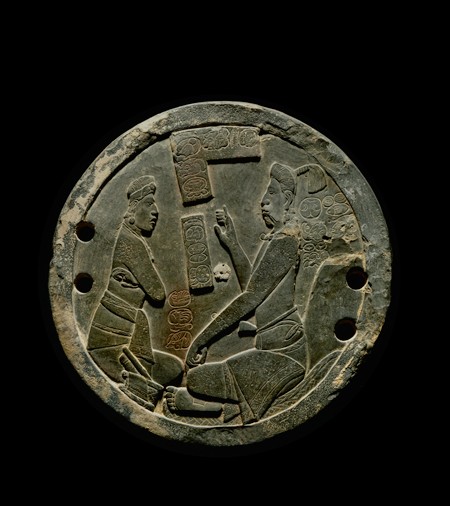In the book I prepared at CASVA, I propose that a central concern in Maya imagery and texts was the task of “growing men.” Boys and teenagers, always elites in surviving evidence, were conceived as vegetal sprouts (ch’ok), a decipherment made some decades ago but left partly in fallow. For rulers of the Classic period, the hope was that youths would grow to become kings and nobles, ready to govern, maraud, game, feast, and reproduce. The resemblance to plants was more than simile. Ancient Maya consumed maize as kernels on the cob or ground into meal for tamales and porridge. But they also understood human flesh to be maizelike, the intended food of deities. Use of the ch’ok title spanned the Classic period. As it applied to young lords, however, it first came into use as a martial title linked to the central Mexican empire of Teotihuacan. Teenage years carried another feature: although profoundly personal, they were often focused on joint residence and group activity.
A rich vocabulary of Maya glyphs, often serving to caption images, moor several themes in my book. One is “liquid passage,” in which painters identified the finest ceramics as the possessions of young men. Made to hold chocolate drinks, a large percentage of such vases belonged to particular youths, their names recorded in rim-band texts; others, pertaining to generic youths, had more elastic, even impersonal, use. In either case, the pots likely celebrated rites of passage. Production of such ceramics was episodic but copious, with some princes receiving large numbers of pots for further distribution to other nobles. Through acts of spirit possession, gods, too, might own vessels or “drink” from them. Scenes painted or engraved on the ceramics probably served a didactic or hortatory purpose. They did not so much detail specific lives—that is, the biographies of owners—as extol gods and praise-worthy courts.
A second theme pairs the act of “setting apart,” a physical and social segregation, with the assembling of young lords. Key images in painting and sculpture illustrated—and buildings housed—sundry acts of virile initiation, some with homoerotic properties. Younger males endured painful ordeals that introduced them to the duties of fasting and bloodletting. Under supervision by adults. older youths gathered for raucous feasts, as depicted in tableaux of excess and abandon. Or, arriving as pilgrims and working as painters, they stepped with care into caves for journeys of self-discovery in the company of older males. Mythic images modeled homoerotic couplings, including liaisons between youths and men of more advanced age. The cave of Naj Tunich, Guatemala, and an edifice at Rancho San Diego, Yucatán, appear to have been used largely as single-sex spaces. After emergence, youths would reenter a world of two genders and expected marriage.
A third and final theme addresses the tale of a “good prince,” an interpretation, secured by infrared imaging, of the celebrated murals at Bonampak, Mexico. According to glyphic texts, these paintings offer an elaborate, chaptered narrative of an heir to a kingdom just before the Maya collapse in the ninth century CE. Probably one of three brothers, a prince known as Kooj (Puma) is highlighted throughout. In two of the three chambers, he performs as a ritual dancer, embodying dynastic tribute and solar sacrifice. Murals in the central room, in which Kooj fights with his father and grandfather, feature his prowess in battle and reinforces the youth’s qualifications for rule. A final section of my book raises a (chocolate) cup to the old men that young men would become; works were created for them, tagged with glyphs for mam (grandfather), a term equally denoting “grandson.” Withered by age, bony and gaptoothed, older males mirrored some of the ambivalence directed at young men. When shown as gods, some were oversexed or materially acquisitive, warning of masculine life that ended, not in honored wisdom, but in cuckoldry and ridicule.
